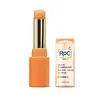What's inside
What's inside
 Key Ingredients
Key Ingredients

 Benefits
Benefits

 Concerns
Concerns

 Ingredients Side-by-side
Ingredients Side-by-side

C13-15 Alkane
SolventWater
Skin ConditioningCocoglycerides
EmollientHelianthus Annuus Seed Wax
Skin ConditioningButylene Glycol
HumectantAcrylates Crosspolymer
AbsorbentPolyhydroxystearic Acid
EmulsifyingTetrahexyldecyl Ascorbate
AntioxidantBis-Behenyl/Isostearyl/Phytosteryl Dimer Dilinoleyl Dimer Dilinoleate
EmollientPolyglyceryl-4 Oleate
EmulsifyingCetearyl Olivate
Polyglyceryl-6 Oleate
EmulsifyingHelianthus Annuus Seed Oil Unsaponifiables
EmollientTroxerutin
Skin ConditioningCalcium Aluminum Borosilicate
Diisostearyl Malate
EmollientGluconolactone
Skin ConditioningSorbitan Olivate
EmulsifyingTocopheryl Acetate
AntioxidantSodium Benzoate
MaskingSodium PCA
HumectantMaltodextrin
AbsorbentCistus Incanus Flower/Leaf/Stem Extract
Skin ConditioningHaematococcus Pluvialis Extract
AntioxidantOctyldodecanol
EmollientCalcium Gluconate
HumectantMalic Acid
BufferingPentaerythrityl Tetraisostearate
EmollientTocopherol
AntioxidantAstaxanthin
Skin ConditioningCaprylic/Capric Triglyceride
MaskingPropylene Carbonate
SolventStearalkonium Hectorite
Gel FormingPalmitoyl Hexapeptide-12
Skin ConditioningCI 77491
Cosmetic ColorantC13-15 Alkane, Water, Cocoglycerides, Helianthus Annuus Seed Wax, Butylene Glycol, Acrylates Crosspolymer, Polyhydroxystearic Acid, Tetrahexyldecyl Ascorbate, Bis-Behenyl/Isostearyl/Phytosteryl Dimer Dilinoleyl Dimer Dilinoleate, Polyglyceryl-4 Oleate, Cetearyl Olivate, Polyglyceryl-6 Oleate, Helianthus Annuus Seed Oil Unsaponifiables, Troxerutin, Calcium Aluminum Borosilicate, Diisostearyl Malate, Gluconolactone, Sorbitan Olivate, Tocopheryl Acetate, Sodium Benzoate, Sodium PCA, Maltodextrin, Cistus Incanus Flower/Leaf/Stem Extract, Haematococcus Pluvialis Extract, Octyldodecanol, Calcium Gluconate, Malic Acid, Pentaerythrityl Tetraisostearate, Tocopherol, Astaxanthin, Caprylic/Capric Triglyceride, Propylene Carbonate, Stearalkonium Hectorite, Palmitoyl Hexapeptide-12, CI 77491
Water
Skin ConditioningCaprylic/Capric Triglyceride
MaskingStearyl Alcohol
EmollientCarthamus Tinctorius Seed Oil
MaskingPolyglyceryl-2 Stearate
EmulsifyingButyrospermum Parkii Butter
Skin ConditioningTheobroma Cacao Seed Butter
EmollientJojoba Esters
EmollientSodium Ascorbyl Phosphate
AntioxidantPyrus Malus Fruit Extract
Skin ConditioningCaffeine
Skin ConditioningSodium Hyaluronate
HumectantHelianthus Annuus Seed Oil
EmollientCamellia Sinensis Leaf Extract
AntimicrobialArginine
MaskingCaprylhydroxamic Acid
Squalane
EmollientEthylhexyl Olivate
Skin ConditioningGlycerin
HumectantPropanediol
SolventSodium Gluconate
Skin ConditioningCetearyl Phosphate
Skin ConditioningCI 77891
Cosmetic ColorantCI 77491
Cosmetic ColorantCetyl Hydroxyethylcellulose
Emulsion StabilisingMica
Cosmetic ColorantCaprylyl Glycol
EmollientCitric Acid
BufferingWater, Caprylic/Capric Triglyceride, Stearyl Alcohol, Carthamus Tinctorius Seed Oil, Polyglyceryl-2 Stearate, Butyrospermum Parkii Butter, Theobroma Cacao Seed Butter, Jojoba Esters, Sodium Ascorbyl Phosphate, Pyrus Malus Fruit Extract, Caffeine, Sodium Hyaluronate, Helianthus Annuus Seed Oil, Camellia Sinensis Leaf Extract, Arginine, Caprylhydroxamic Acid, Squalane, Ethylhexyl Olivate, Glycerin, Propanediol, Sodium Gluconate, Cetearyl Phosphate, CI 77891, CI 77491, Cetyl Hydroxyethylcellulose, Mica, Caprylyl Glycol, Citric Acid
 Reviews
Reviews

Alternatives
Ingredients Explained
These ingredients are found in both products.
Ingredients higher up in an ingredient list are typically present in a larger amount.
This ingredient is an emollient, solvent, and texture enhancer. It is considered a skin-softener by helping the skin prevent moisture loss.
It helps thicken a product's formula and makes it easier to spread by dissolving clumping compounds.
Caprylic Triglyceride is made by combining glycerin with coconut oil, forming a clear liquid.
While there is an assumption Caprylic Triglyceride can clog pores due to it being derived from coconut oil, there is no research supporting this.
Learn more about Caprylic/Capric TriglycerideCi 77491 is also hydrated iron III oxide. It's sole purpose is to give a red/pink hue to products.
Iron III oxides are classified as inorganic chemicals for coloring.
Synthetically created Ci 77491 is considered safer than those naturally found. This is because the synthetically created version may contain less impurities. Iron oxides are generally non-toxic and non-allergenic.
Learn more about CI 77491Water. It's the most common cosmetic ingredient of all. You'll usually see it at the top of ingredient lists, meaning that it makes up the largest part of the product.
So why is it so popular? Water most often acts as a solvent - this means that it helps dissolve other ingredients into the formulation.
You'll also recognize water as that liquid we all need to stay alive. If you see this, drink a glass of water. Stay hydrated!
Learn more about Water